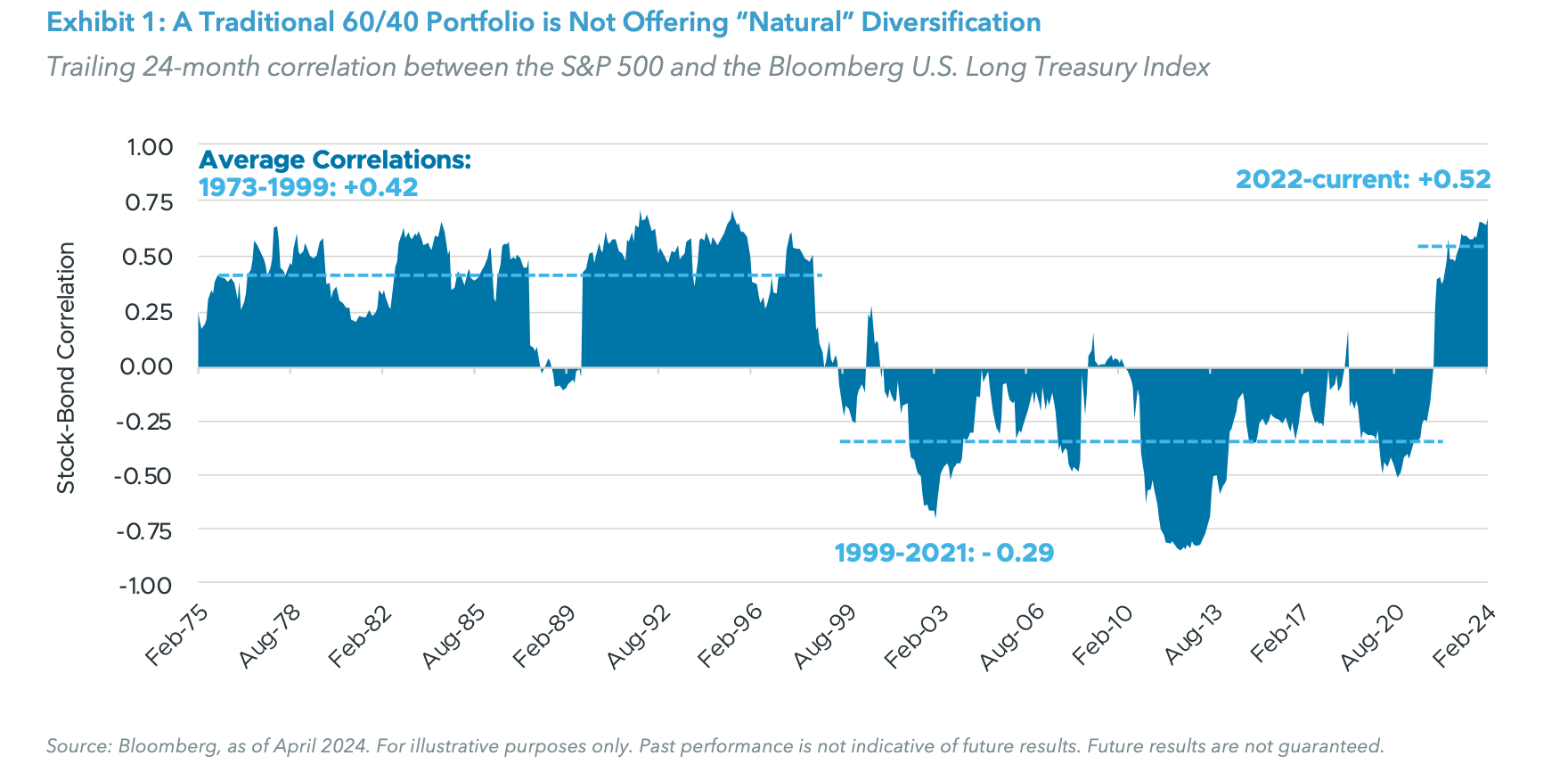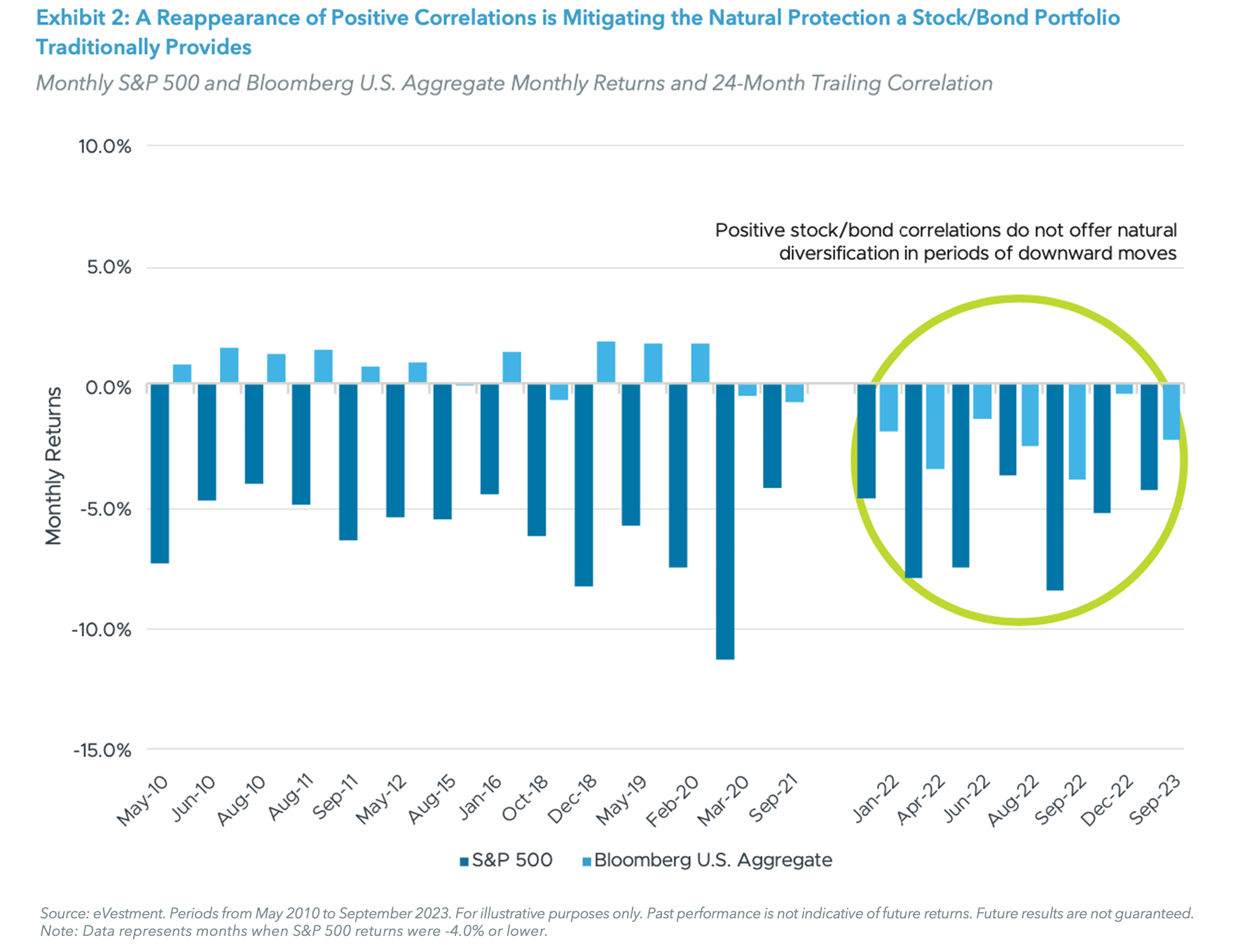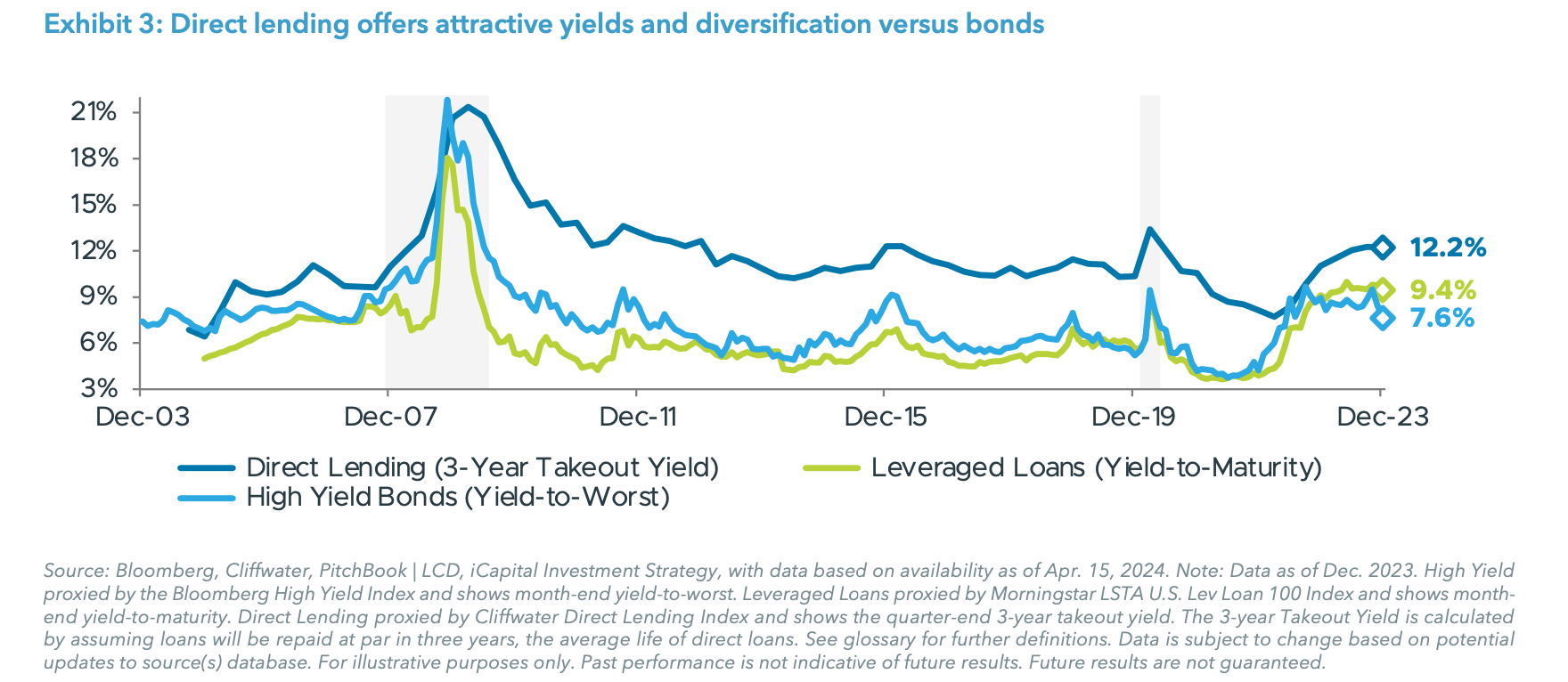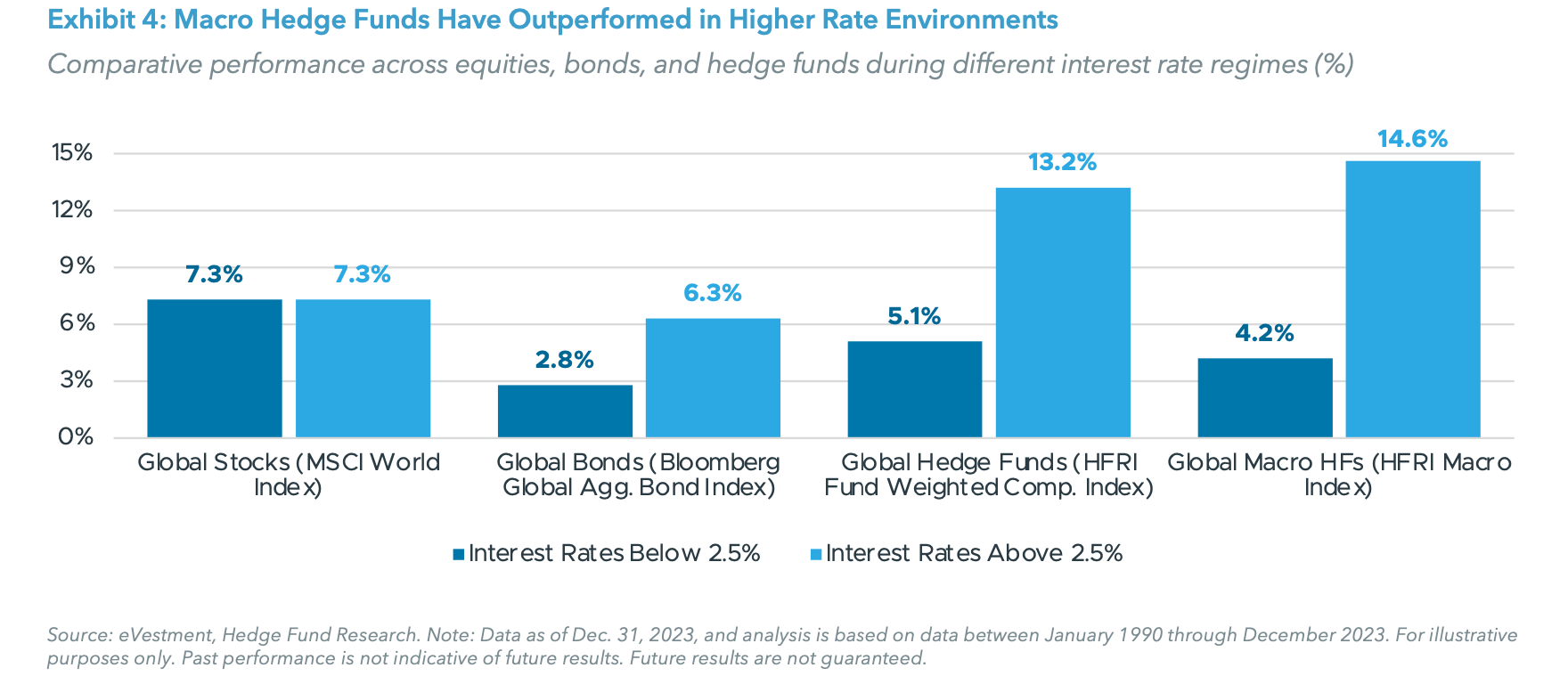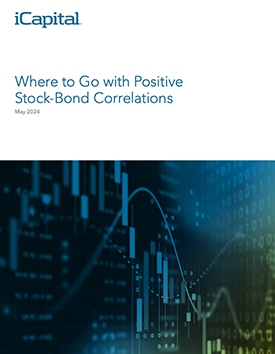When looking at global capital markets over the last 50 years, one of the main observations is the changing correlation between stocks and bonds. Some periods show sustained positive correlation, while at other times it is negative. Over any extended period of time, we know the way that assets react to fundamental economic measures will change. Yet, a core tenet of any investment framework is an enduring relationship between stocks and bonds.
This relationship between stock and bonds is a primary factor for assessing risk in an investor’s portfolio. In periods of negative correlation, investors can rely on the bond portion of their portfolio to function as a counterweight to equities. For example, when equity markets experience a decline, bonds would provide natural protection, and vice versa.
In fact, over much of the last twenty years, stock and bonds were negatively correlated—providing the desired backdrop for an effective traditional 60/40 portfolio. But starting in 2018 the degree of negative correlation started to turn and, importantly, the diversification protection that bonds provided began to deteriorate. Stock-bond correlations turned positive in early 2022 (based on trailing 24-month returns), suggesting that stocks and bonds are now more likely to experience similar directional moves.
The implications of this shift are significant. If the traditional 60/40 portfolio no longer provides the key ingredients of a well-constructed portfolio – capital appreciation, downside protection, and portfolio diversification – investors may need to rethink and reshape their portfolios.
Planning for different investment backdrops
Depending on the composition of assets within a stock and bond portfolio, a traditional 60/40 allocation may not provide the risk profile or returns that investors expect. And while portfolio construction in a period of positive stock- bond correlation might be new to certain generations, the 1970s, 80s and 90s experienced a similar trend.
During this period, stocks and bonds generally moved in the same direction. The U.S. economy experienced high and variable risk-free rates and high and variable inflation, though there were other economic and policy drivers.
It’s early to forecast whether the most recent phase of positive stock-bond correlation will prove to be short or long-lived, but investors can plan for the possibility that what worked well over the last two decades may not necessarily work the same moving forward. Stocks and bonds alone may not be able to fulfill the key portfolio goals of return generation, protection, and diversification.
For example, as stock/bond correlations began to turn positive in 2022, bonds experienced negative returns in each period when stocks suffered at least a 4% decline. Conversely, in the preceding 10 years when correlations were positive, bonds offered protection in periods of negative stock returns (Exhibit 2).
While the macro-economic backdrop provides the fundamental components for the behavior of stocks, bonds, and other assets, it’s worth noting a few things in periods of positive correlation.
- Asset correlations can be driven by many factors but at times of higher or more uncertain inflation, the correlation of stocks and bonds will more likely tend to be positive. Conversely, correlations tend to be negative in lower inflationary and growth environments.
- Changes in inflation can trigger similar directional behavior in stocks and bonds as rising inflation can depress real returns on bonds, and weigh on future earnings and multiples for stocks, and vice versa.
- If stocks and bonds remain positively correlated, each leg of the stool that comprises a well-constructed portfolio—capital appreciation, wealth preservation, and portfolio diversification—may be weakened.
Time to revisit the “re-correlation” toolkit
Many investors may not have experienced a prolonged period when stocks and bonds have been positively correlated. This backdrop may require a new mindset and has implications for portfolio construction. Finding ways to not just manage allocations but also expand the universe of investable options to alternative investments will likely become increasingly important in meeting long-term goals.
This may include certain “non-directional” strategies that are less dependent upon the trajectory of the overall markets but are instead focused on exploiting its inefficiencies with an eye on downside protection. For opportunities beyond traditional stocks and bonds, we highlight direct lending, real estate debt, and macro hedge funds. These asset classes offer diversified sources of returns and low correlations to the traditional 60/40 allocation.
Direct Lending
Traditional fixed income investments have faced rising rates, higher inflation, and lower yields over the last two- plus years, creating challenges in managing the “40%” bond allocation in a traditional portfolio.
Direct lenders in the private market are benefiting from greater absolute yields due to exposure to floating-rate securities, providing enhanced risk-adjusted returns. In addition, many direct loan facilities are secured and are senior in the capital structure, which provides defensive attributes against defaults. Currently, lenders have the potential to achieve yields exceeding 12%, as spreads range between 550-700 basis points (bps) above the Secured Overnight Financing Rate (SOFR) base rate of 5.3%, and original issue discounts average 2-3%, amortized over three years.1
Due to these more stable total returns and defensive attributes, direct lending has been negatively correlated to the aggregate bond index, thus providing a complementary option to diversify fixed income allocations.
Real Estate Debt
Real estate debt offers stable, predictable income that generates regular cash yield for investors—helping provide additional sources of return and low correlation to other alternative investment asset classes.
Investment in real estate debt has been a topical debate. On one hand, the Fed’s rapid rate raising campaign (525 bps increase between March 2022 and July 2023) has resulted in high interest expenses for existing borrowers and provided a catalyst for regional banks to pull back in their lending activities. And vacancies rates – primarily in office and retail – remain high. On the other hand, with the pull back in lending by regional banks, a leading source of capital to commercial real estate (CRE) borrowers, there are many opportunities for CRE debt funds to step in and provide capital, especially given higher rates and wider spreads.
Despite a complicated backdrop in CRE, it’s important to remember that the size of the commercial real estate market is often underappreciated – sub-categories include multi- family, industrial, hotel, office, and retail assets. Meaning, there are opportunities within the ecosystem even if the entire ecosystem isn’t optimally positioned.
Macro Hedge Funds
Macro hedge fund strategies, which seek to benefit from opportunities based on broad economic activity, political outcomes and differing macroeconomic policies, have historically performed better during periods of higher interest rates, inflation uncertainty, and market volatility (Exhibit 4).
If history is a guide, elevated rates provide more opportunities for all hedge funds, but most notably the more diversifying strategies such as global macro. These types of funds are specialized in navigating shifting market conditions across stock, bond, currency, and commodity markets.
Macro strategies can be a helpful shock absorber, providing low correlation to the traditional 60/40 portfolio. For example, amid the three-month downturn for equities from August to October 2023, macro strategies, proxied by the HFRI Macro Asset Weighted Index, recorded a gain of +4.4%, while the S&P 500 incurred a loss of -8.6%.2
Conclusion
As ever, appropriate investment selection depends on an investor’s goals, risk tolerance and liquidity needs, among many other factors. But for investors who are concerned with shifting stock-bond correlations, alternative investments can be an additive component of a portfolio that meets overall financial goals.
INDEX DEFINITIONS
Bloomberg U.S. Aggregate Bond Index: A broad base, market capitalization-weighted bond market index. The index includes Treasury securities, government agency bonds, mortgage-backed bonds, corporate bonds, and several foreign bonds traded in the United States.
S&P 500: The S&P 500 is widely regarded as the best single gauge of large-cap U.S. equities. The index includes 500 of the top companies in leading industries of the U.S. economy and covers approximately 80% of available market capitalization.
ENDNOTES
1. Federal Reserve Bank of New York, Dec. 13, 2023.
2. Bloomberg, HFRI, iCapital Investment Strategy, as of Dec. 7, 2023.
IMPORTANT INFORMATION
The material herein has been provided to you for informational purposes only by Institutional Capital Network, Inc. (“iCapital Network”) or one of its affiliates (iCapital Network together with its affiliates, “iCapital”). This material is the property of iCapital and may not be shared without the written permission of iCapital. No part of this material may be reproduced in any form, or referred to in any other publication, without express written permission of iCapital.
This material is provided for informational purposes only and is not intended as, and may not be relied on in any manner as, legal, tax or investment advice, a recommendation, or as an offer or solicitation to buy or sell any security, financial product or instrument, or otherwise to participate in any particular trading strategy. This material does not intend to address the financial objectives, situation, or specific needs of any individual investor. You should consult your personal accounting, tax and legal advisors to understand the implications of any investment specific to your personal financial situation.
ALTERNATIVE INVESTMENTS ARE CONSIDERED COMPLEX PRODUCTS AND MAY NOT BE SUITABLE FOR ALL INVESTORS. Prospective investors should be aware that an investment in an alternative investment is speculative and involves a high degree of risk. Alternative Investments often engage in leveraging and other speculative investment practices that may increase the risk of investment loss; can be highly illiquid; may not be required to provide periodic pricing or valuation information to investors; may involve complex tax structures and delays in distributing important tax information; are not subject to the same regulatory requirements as mutual funds; and often charge high fees. There is no guarantee that an alternative investment will implement its investment strategy and/or achieve its objectives, generate profits, or avoid loss. An investment should only be considered by sophisticated investors who can afford to lose all or a substantial amount of their investment.
iCapital Markets LLC operates a platform that makes available financial products to financial professionals. In operating this platform, iCapital Markets LLC generally earns revenue based on the volume of transactions that take place in these products and would benefit by an increase in sales for these products.
The information contained herein is an opinion only, as of the date indicated, and should not be relied upon as the only important information available. Any prediction, projection or forecast on the economy, stock market, bond market or the economic trends of the markets is not necessarily indicative of the future or likely performance. The information contained herein is subject to change, incomplete, and may include information and/or data obtained from third party sources that iCapital believes, but does not guarantee, to be accurate. iCapital considers this third-party data reliable, but does not represent that it is accurate, complete and/or up to date, and it should not be relied on as such. iCapital makes no representation as to the accuracy or completeness of this material and accepts no liability for losses arising from the use of the material presented. No representation or warranty is made by iCapital as to the reasonableness or completeness of such forward-looking statements or to any other financial information contained herein.
Securities products and services are offered by iCapital Markets, an SEC-registered broker-dealer, member FINRA and SIPC, and an affiliate of iCapital, Inc. and Institutional Capital Network, Inc. These registrations and memberships in no way imply that the SEC, FINRA, or SIPC have endorsed any of the entities, products, or services discussed herein. Annuities and insurance services are provided by iCapital Annuities and Insurance Services LLC, an affiliate of iCapital, Inc. “iCapital” and “iCapital Network” are registered trademarks of Institutional Capital Network, Inc. Additional information is available upon request.
©2024 Institutional Capital Network, Inc. All Rights Reserved.



